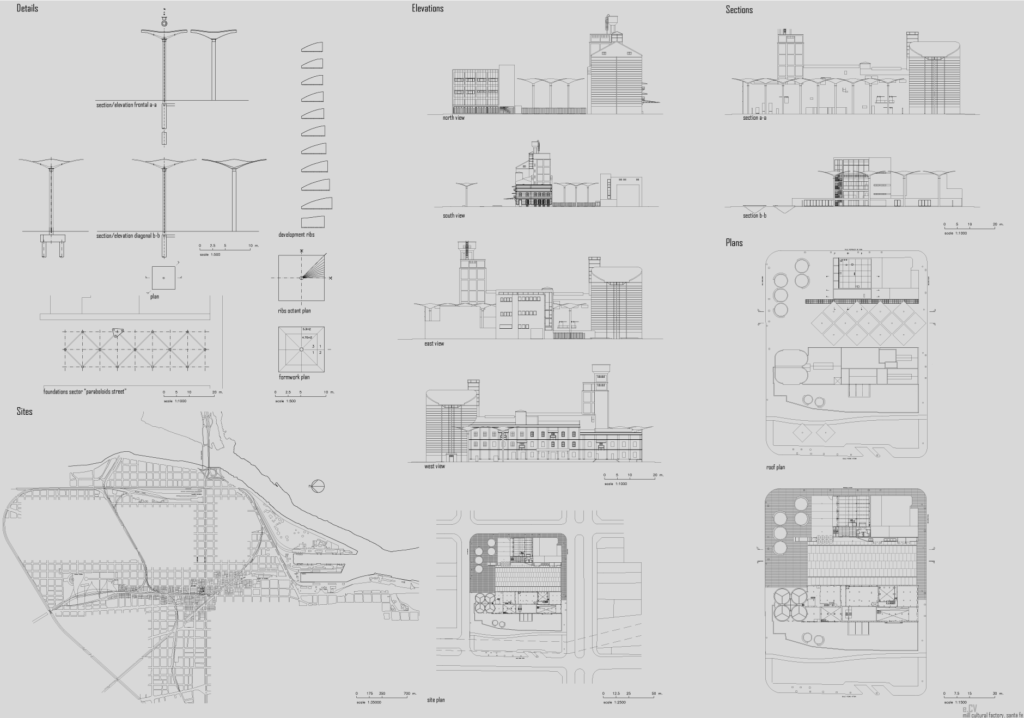azc – Water Reveries, Arizona Canal Bridge Public Art Project
Phoenix, Arizona, United States [2003-07]
This project starts by developing common issues for Arizona: the construction of a place protected from the extreme hot and dry conditions of the desert in the metropolitan Area of Phoenix, and close to a fascinating desert landscape. Some common resources arise for the artificial construction of these places: the use of successive veils and overlapped patterns as a reflection about open/closeness, public accessibility and the hidden mystery of the desert landscape.
The Arizona Canal, although stark, is in many ways a remarkable landscape. An artificial river, it is set within ribbons of infrastructure and laid deliberately across the desert, following the ancient canal system developed by the natives of the area. It is also physically spare, made up primarily of earth, steel, concrete and water. Unlike most publicly accessible places in the City, the canal environment has been determined by a sort of internal ‘non-public’ logic. The visitor can sense this from the start, and this is what makes the canal so special: while it was not made for the public it is available for public use. The pedestrian is always a visitor, granted temporary observer status to the monumental effort to irrigate the desert. Without the careful manipulation of water, Phoenix would be impossible to inhabit as we do today, yet here in Phoenix water is mostly invisible to the community it supports. Our proposal seeks to celebrate, to bring to awareness the particular and meaningful beauty of the canal and the power of water to enhance our community.
The Project operates on one of these raw infrastructures that are intensely although informally utilized by the present Phoenicians as place for walks, jogging and cycling especially in the early morning hours. In this enigmatic landscape of harsh infrastructure, water treatment plants and the view of the Squaw Peak Mountain, the project attempts to find an intersection in the course of abundant water and scarce passing runners that cross the canal to the other bank to continue their journey to work. In response to the powerful character of the site, we decided to limit ourselves to work with materials that are already there: water, concrete and metal. We concentrated our efforts within the space of the canal itself, by encompassing the quality of the waters that flow through it, heightening its infra-structural enterprise.
The project articulates the water turmoil generated by the curve and the access to the plant, with the exhaustion and dizziness caused by the intense heat to the people. This situation engenders a place of intensity surrounded by a veil screen, supported by an exposed structure of pre-cast reinforced concrete beams, benches, railings, and transversal ribs. The space, taking the proportions of the first Frank Lloyd Wright’s Taliesin Studio, absorbs the interferences of the varied elements: water, sun , people, and their subtle movements overlaid. The associated artist Ned Kahn has previously studied these chaotic turbulences and develops together with Karl Jensen the metal surface as an industrial grading with reflective inserts, to capture the reveries of water.
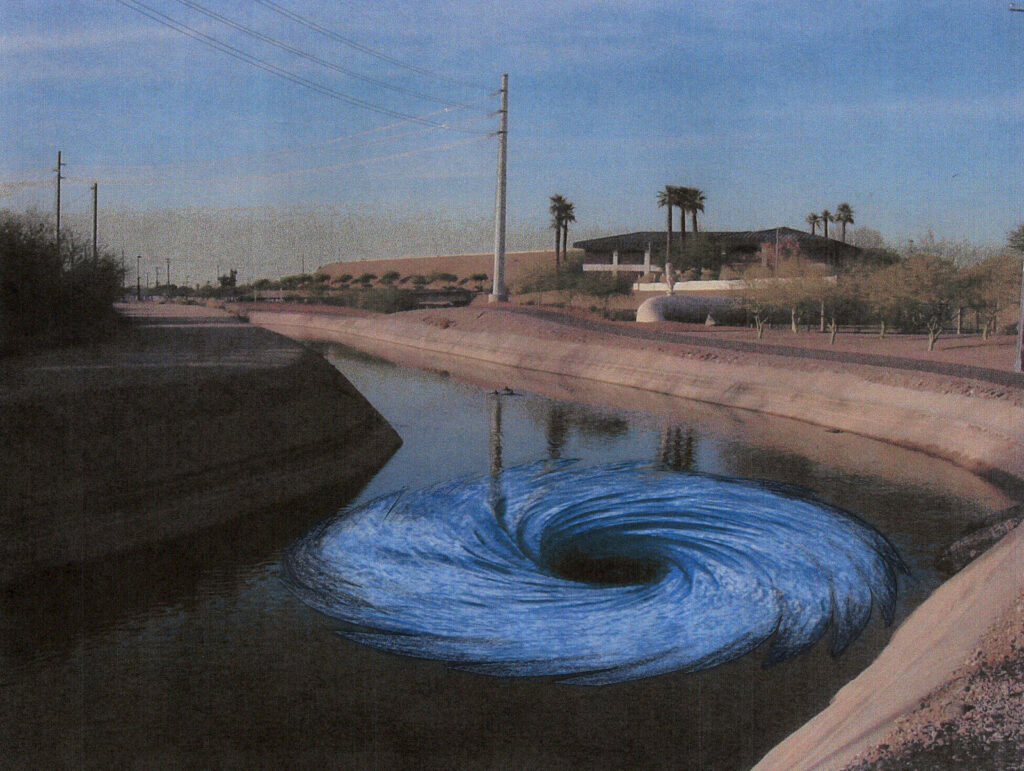
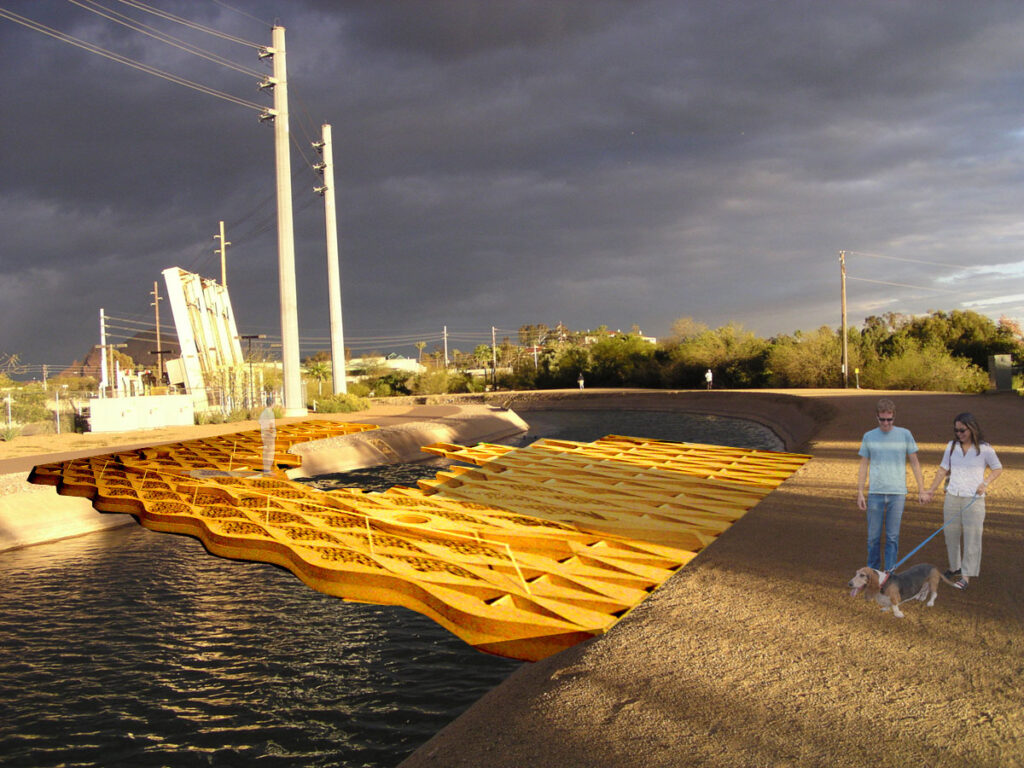
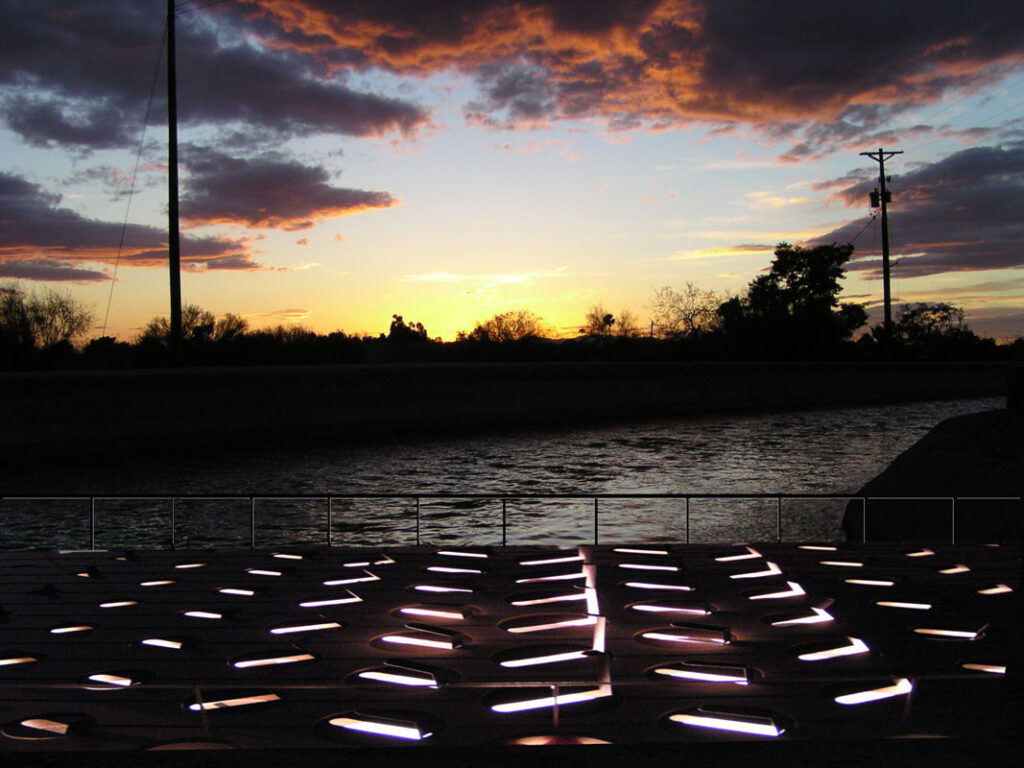
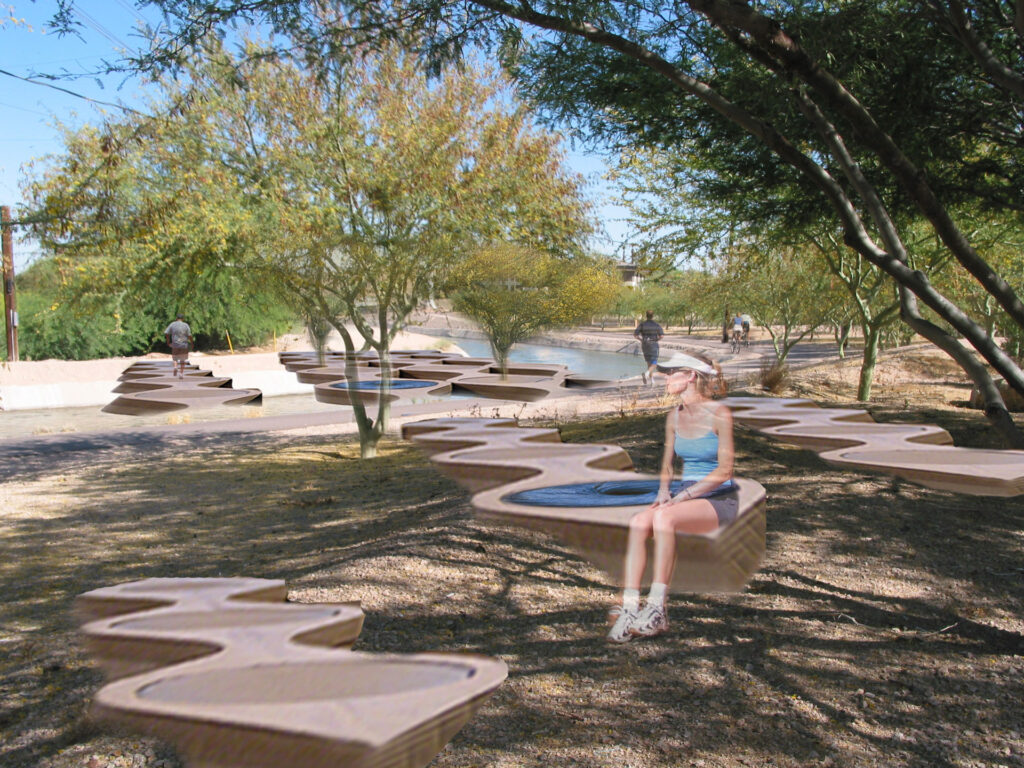
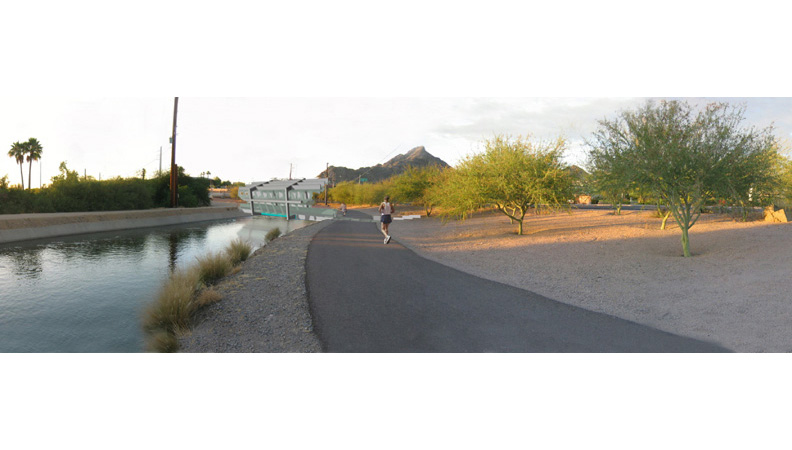
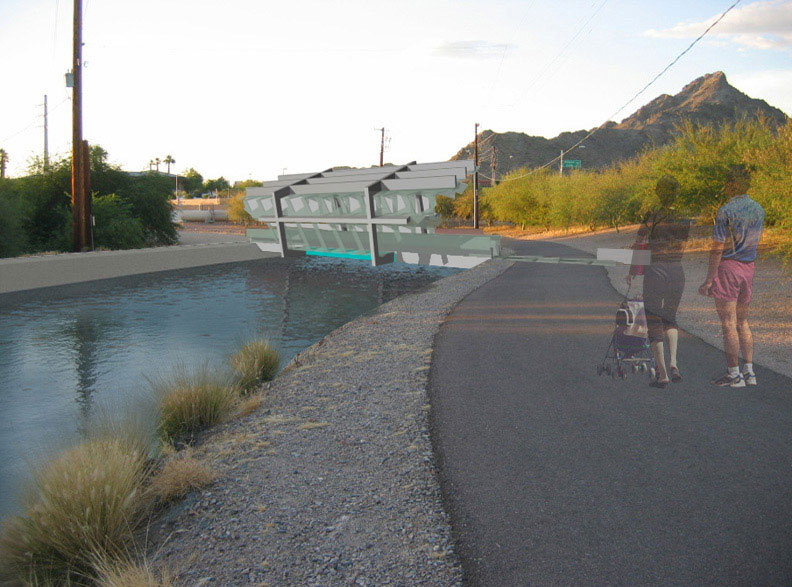
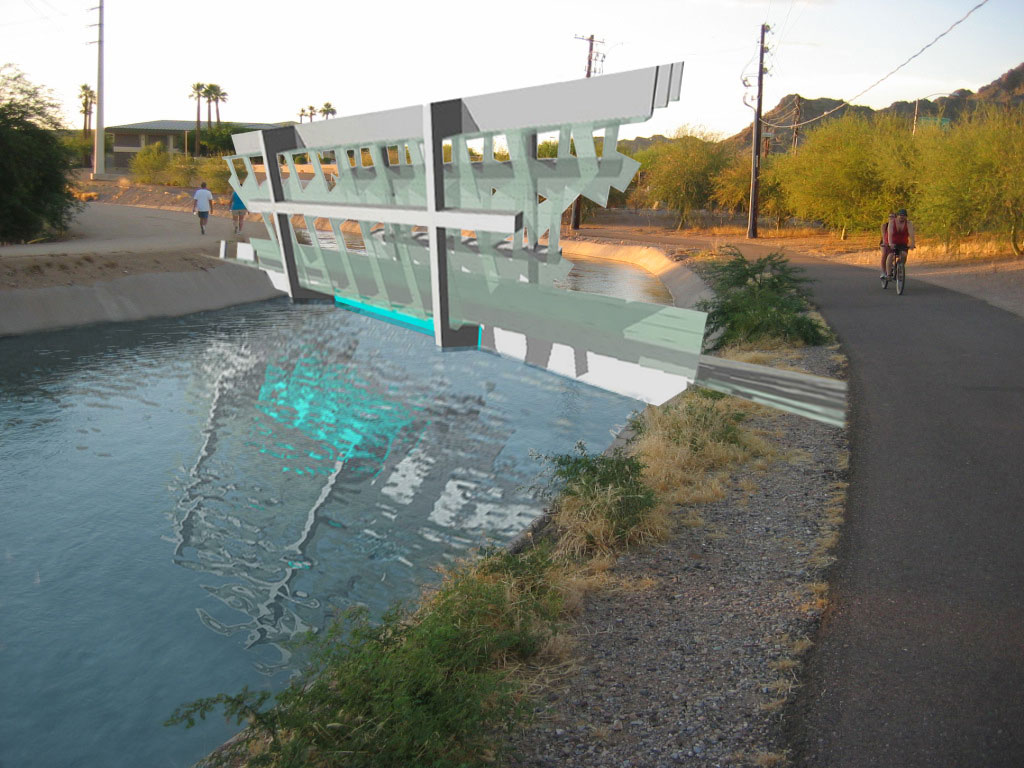
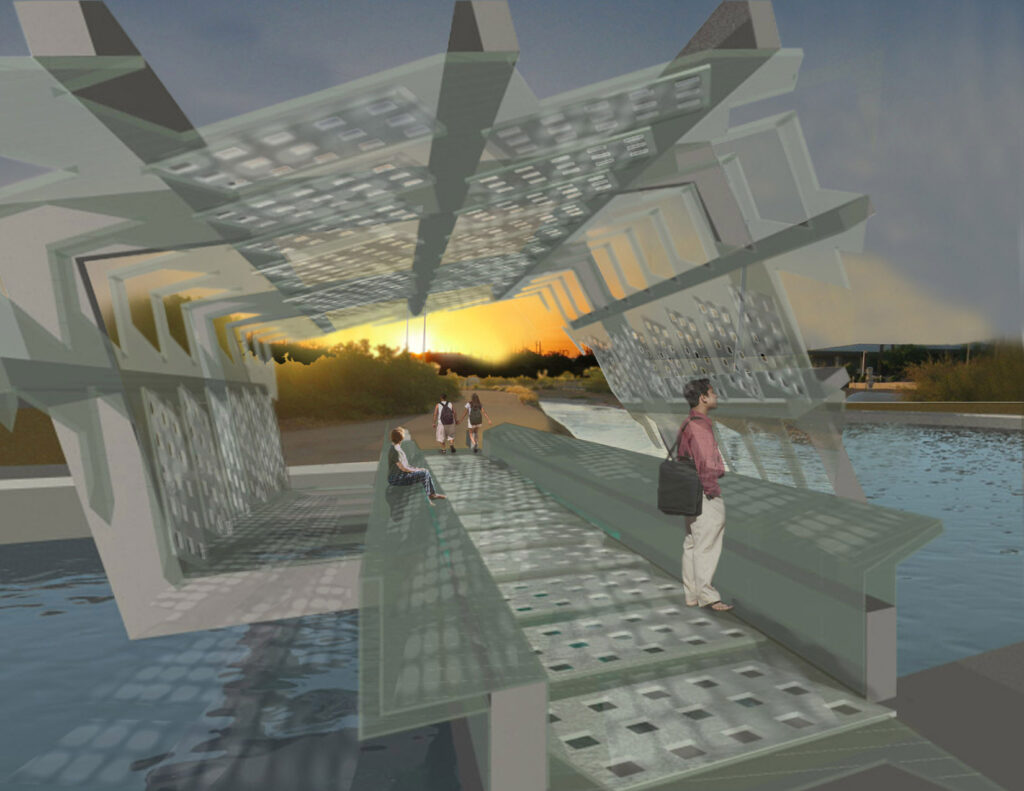
Status: Design Development, Public Art National Competition, Awarded 1st Prize; On Hold
Construction Budget: US $450,000
Design: Claudio Vekstein in collaboration with Catherine Spellman, Archs, Karl Jensen and Ned Kahn, Artists
Design Assistants: Zubin Shroff, Patrick Mayers, Tulio Gines, Lea Faber, Archs
Structural Design: Greg Brickey, Eng
Client: Phoenix Office of Arts and Culture, Funded by City of Phoenix Water Services Department, Percent for Art Funds and SRP, Salt River Project, Arizona
Location: Arizona Canal at 24th Street, Phoenix, Arizona, United States
Area: 170 m2; 1,800 sq ft
